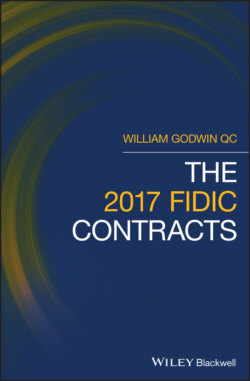Читать книгу The 2017 FIDIC Contracts - William Godwin - Страница 42
2.8.2 Cap on Contractor's Total Liability
ОглавлениеThe second paragraph of clause 1.15/1.14 in the 2017 editions provides that the total liability of the Contractor to the Employer under or in connection with the Contract, other than:
1 under clause 2.6, relating to Employer‐supplied materials and Employer's equipment;
2 under clause 4.19, relating to temporary utilities;
3 under clause 17.3, relating to intellectual and industrial property rights; and
4 under the first paragraph of clause 17.4, relating to indemnities provided by the Contractor
are not to exceed whatever sum may be stated in the Contract Data or, if no sum is stated, the Accepted Contract Amount (in the Red and Yellow Books) or (in the Silver Book) the Contract Price stated in the Contract Agreement. In this part of clause 1.15/1.14, the Contractor's total liability under or in connection with the Contract is thus limited or capped. The Accepted Contract Amount is defined in clause 1.1.1 of the Red and Yellow Books to mean the amount accepted in the Letter of Acceptance for the execution of the works in accordance with the Contract; the Contract Price is defined in clause 1.1.10 of the Silver Book to mean the agreed amount stated in the Contract Agreement for the execution of the works, including any adjustments in accordance with the Contract.7
Applying a cap to the Contractor's total liability under or in connection with the Contract is intended to encourage responsible contractors to tender by giving them an assurance about the total amount of their potential exposure and to enable them to insure appropriately8 ; it is important to remember, however, that the clause does not limit the duration of the Contractor's liability, only its amount. As with the 1999 editions, clause 11.10 of the 2017 contracts expressly provides that even after acceptance of the works by issue of the Performance Certificate each party is to remain liable for the fulfilment of any obligation remaining unperformed at that time and that, for purposes of determining the nature and extent of unperformed obligations, the Contract is to be deemed to remain in force. The 2017 contracts differ from the 1999 editions only in that, in respect of plant, the Contractor is not to be held liable for any defects or damage occurring more than two years after expiry of the Defects Notification Period, unless that is inconsistent with the applicable law or in any case of fraud, gross negligence, deliberate default or reckless misconduct.
